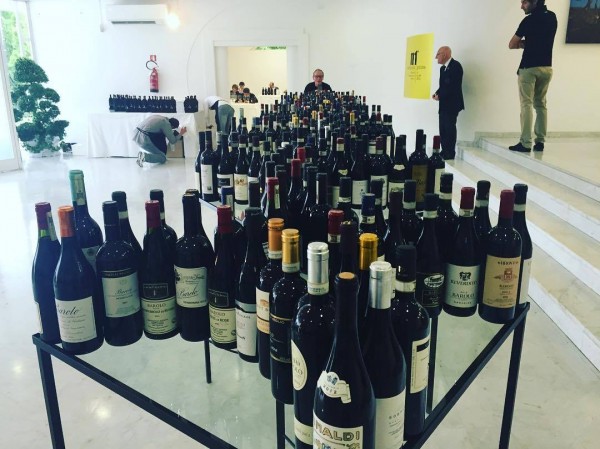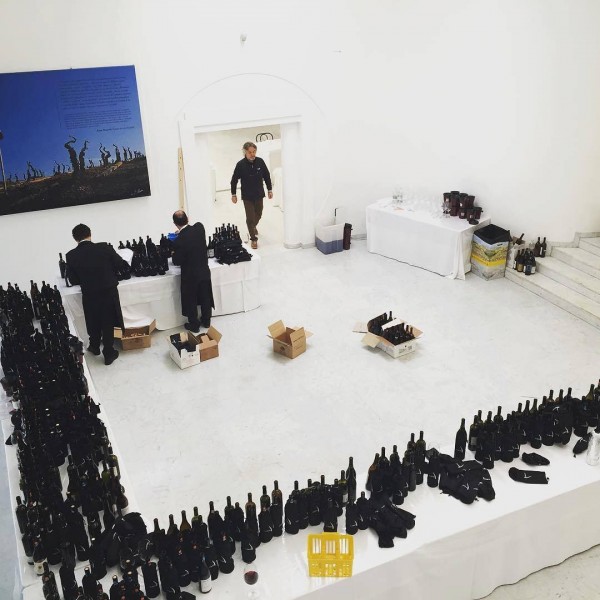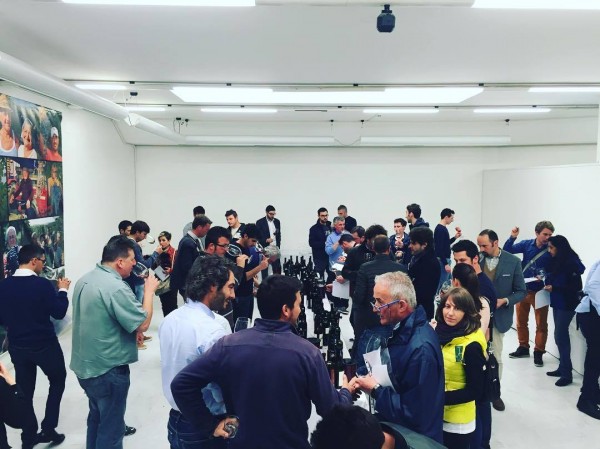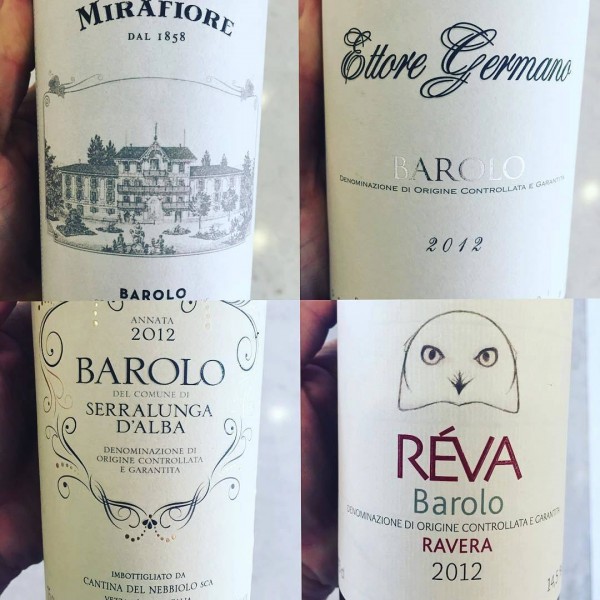Barolo 2012: first impressions
Posted on 1 June 2016
As each year, I spent five days in Alba, the local hub, tasting over 300 Barolos from 2012 at the Nebbiolo Prima event—the official presentation of the new vintage (see my coverage of past editions). While tasting these tannic, ageworthy wines at age 4 is not ideal—I have long advocated the release, and tastings, be delayed by year—the sheer number of samples and the opportunity to retaste many of these wines over 2016 gave me a solid impression of 2012.
In a way, 2012 marked a reversal of weather patterns to a pre-2000 situation, with a long, cool, rainy spring, delayed budbreak and problems with coulure. August was hot and speeded the grape maturation, but a heavy storm at the end of August brought the temperatures down radically from 30+C to about 17C and September continued quite cool and cloudy. Nebbiolo ripens late and every Barolo producer will tell you the quality of the vintage is determined by September, if not October; 2012 clearly lacked the Indian summer needed for oustanding quality. Asked what vintage she would compare 2012 to, Maria Teresa Mascarello mentioned 1993—a vintage of many good surprises but not a memorable one.
The weather was thus challenging for the late-ripening Nebbiolo and required a lot of work from vintners, including precision viticulture and strict grape selection. Having tasted through 300 wines, I feel not all producers have fine tuned their winemaking accordingly. There are many extracted, overtannic wines in a year when it was better to extract less.
Many 2012 Barolos are angular and ungenerous (at this stage). They lack the flesh and attractive texture of warm rich years such as 2011 or 2007 but also the filling and harmony of more structured vintages such as 2010 and 2008. More than a few show underripe, vegetal aromas and stalky tannins from the imperfect maturation. This is further supported by the tart red fruit—most often, cranberry—profile and the acidic punch that make many wines resemble Barbera rather than Nebbiolo. „Stern” is a recurrent word in my notes. They can be juicy and attractively fruity but in a great many cases, lack real fat and breadth to sustain the powerful tannins. It is thus not an matter of one wrong element but rather of imperfect balance between various components.
2011 was a year when Barolos were universally very good regardless of origin. In 2012, we are back to substantial subregional variations. My feeling is that cooler sites normally producing lighter wines, such as Verduno and Novello, fared less well, with the greenness most apparent. By contrast, the more southern, warmer crus of Monforte d’Alba produced the best wines, riper with darker fruit profiles. Winemaking was also important, and 2012 was one vintage where I felt a bit of new oak often helped fill out the mid-palate and soften the hard edges. When this was coupled with careful extraction, the wines are very attractive, as chez Azelia, for example. There are some successes in the traditional style too, when precise winemaking delivered wines that are perfumed and floral but with strong tannins for long ageing—a bit like in the good vintages of the 1980s and 1990s (Giacomo Conterno). Yet even top-notch producers sometimes came out with challenging wines: at Aldo Conterno, it is the least immediately convincing vintage I’ve tasted in a decade.
2012 is not bad per se. It is actually a perfectly OK vintage. In the 1990s, it would have stood out as one of the successes of the decade. The problem today is that Barolo has had an embarrassment of riches in terms of excellent vintages and there are so many brilliant wines on the market from years such as 2011, 2010, 2008, and 2006, all of which are better (and have a better reputation) than 2012. In addition, 2013 will soon be released, with great expectations for an outstanding vintage, followed by 2014 which I also expect to be excellent and 2015 even better. In that sense, 2012 is unlucky. It will end up as an intermediate vintage for earlier drinking if you have no access to better years. That’s slightly unfair, but it’s the reality of the market and of global warming, giving Barolo a much more consistent climate than in the past.
Disclosure: my trip to Piedmont including flights, accommodation, and wine tasting programme are sponsored by Albeisa, the local wineries’ association.





